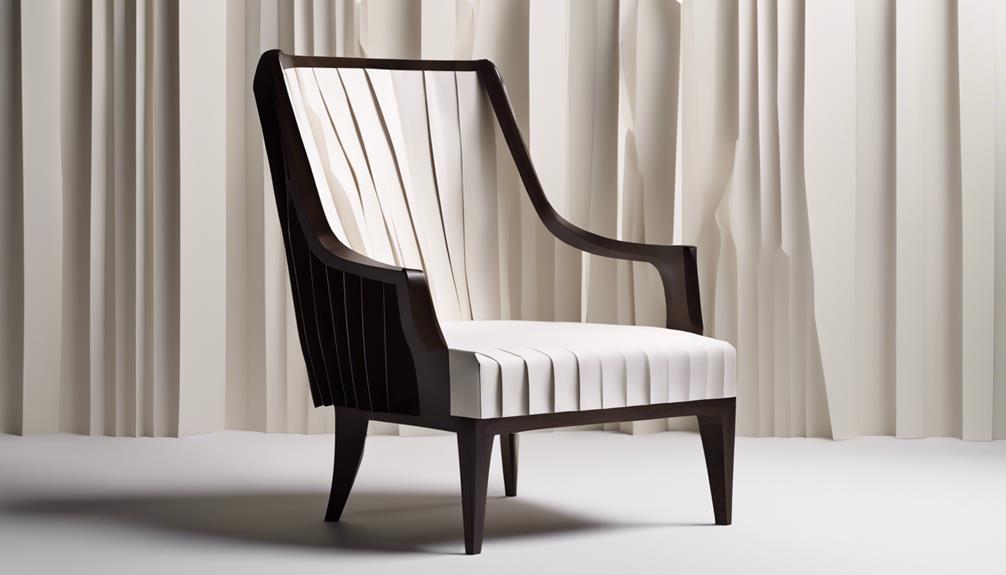Biedermeier furniture showcases a shockingly modern aesthetic, seamlessly merging timeless elegance with minimalist influences. With its emphasis on clean lines, natural wood grains, and simple yet sophisticated design, Biedermeier pieces offer a classic yet contemporary appeal. This style, originating in the early 19th century, has found a favored spot in modern interiors for its versatility and ability to effortlessly elevate any space. The enduring allure of Biedermeier lies in its enduring relevance, commanding high prices as coveted investments and inspiring modern furniture design. Its impact on modern aesthetics bridges classical elegance with a touch of modern flair, appealing to both traditionalists and new design enthusiasts.
Key Takeaways
- Biedermeier's simple lines and geometric shapes resonate in modern design.
- Natural wood grains and warm tones add timeless elegance to contemporary spaces.
- Versatile blend of tradition and innovation suits various modern aesthetics.
- Clean, minimalist design with meticulous craftsmanship remains shockingly relevant.
- Biedermeier effortlessly bridges classical charm with modern sophistication.
Timeless Elegance of Biedermeier Design
The timeless elegance of Biedermeier design is characterized by its simplicity, informality, and lightness, making it a favored choice for modern interiors. Biedermeier style, originating in the early 19th century, marked a departure from the opulent Empire designs of the time, embracing playful geometric shapes, natural wood grains, and lighter woods like walnut and cherry.
Despite initial mockery for being middle-class and unambitious, Biedermeier design has stood the test of time. Its enduring appeal lies in visual delicacy, unadorned planes, and the ability to seamlessly blend with contemporary aesthetics. Even after two centuries, pieces from the Biedermeier era are considered fresh and surprisingly modern, showcasing the style's enduring elegance and sophistication.
The rejection of excessive ornamentation in favor of clean lines and understated elegance has enabled Biedermeier furniture to maintain its relevance and popularity in modern interior design, proving that simplicity and lightness never go out of style.
Minimalist Influence in Biedermeier Pieces

Embracing clean lines and unadorned surfaces, Biedermeier pieces exhibit a strong minimalist influence. The minimalist approach in Biedermeier furniture emphasizes functionality and simplicity, resonating with modern interior trends. These pieces feature minimalist aesthetics that make them versatile for contemporary spaces, adding a touch of modernity to any room. The clean lines and unembellished surfaces of Biedermeier pieces contribute to their minimalist appeal, showcasing a design philosophy that prioritizes sleekness and practicality.
Incorporating minimalist elements, Biedermeier furniture stands out for its understated elegance and timeless charm. The blend of classic craftsmanship with minimalist principles creates pieces that aren't only visually appealing but also highly functional. The minimalist influence in Biedermeier pieces brings a sense of balance and harmony to interior spaces, making them a popular choice for those seeking a modern yet sophisticated look.
Whether in a traditional or contemporary setting, Biedermeier furniture with its minimalist design language adds an invigorating and chic aesthetic touch.
Clean Lines and Natural Beauty
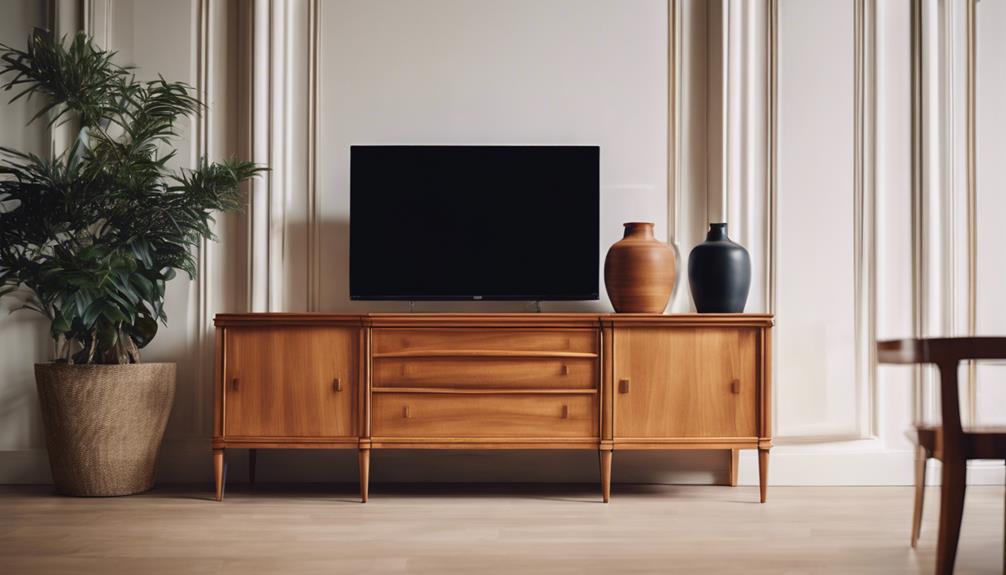
Biedermeier furniture stands out for its timeless minimalist design, focusing on clean lines and graceful curves that exude functional elegance. Craftsmanship takes center stage in these pieces, showcasing the natural beauty of warm woods like walnut, pear, and cherry.
Timeless Minimalist Design
Exuding a sense of modernity with its clean lines and emphasis on natural beauty, Biedermeier furniture stands as a timeless example of minimalist design. The following characteristics define its enduring appeal:
- Simplicity and Functionality: Biedermeier furniture is renowned for its clean lines and simple yet functional designs, prioritizing practicality alongside aesthetics.
- Warm Woods Emphasis: The design of Biedermeier pieces highlights the natural beauty of warm woods like walnut, cherry, and pear, contributing to a minimalist aesthetic that transcends time.
- Influence on Modern Styles: Biedermeier furniture's timeless minimalist design has left a lasting impact on modern Scandinavian and minimalistic styles, showcasing its relevance and adaptability in contemporary interior design.
This minimalist approach not only emphasizes the beauty of craftsmanship and wood grains in each piece but also serves as a precursor to the sleek, uncluttered designs favored by many today.
Emphasis on Craftsmanship
Craftsmanship shines through in the clean lines and natural beauty of Biedermeier furniture, highlighting the quality of materials and meticulous construction. The emphasis on craftsmanship in Biedermeier pieces is evident in the simplicity and elegance achieved through the skill and precision of the artisans who crafted them.
The style's focus on clean lines and minimal ornamentation not only accentuates the natural beauty of warm, local woods like walnut, pear, and cherry but also showcases the expertise of the craftsmen who meticulously constructed these timeless pieces. Biedermeier furniture's enduring appeal lies in its ability to highlight the craftsmanship of the creators, emphasizing the beauty of natural materials through clean lines and meticulous attention to detail.
Functional Elegance Showcased
The clean lines and natural beauty of Biedermeier furniture effortlessly combine to showcase functional elegance. Biedermeier pieces are renowned for their design that emphasizes simplicity and informality, creating a harmonious blend of aesthetics and practicality.
The style's rejection of dark tones like ebony and mahogany in favor of warm wood colors such as walnut, pear, and cherry further enhances its simplistic yet elegant appeal. Additionally, Biedermeier furniture stands out with its playful geometric shapes and curves, adding a touch of modernity to pieces originating from the 19th century.
- Biedermeier furniture highlights the natural beauty of wood, embracing warm tones that accentuate the wood's grain and texture.
- The style's emphasis on unadorned planes and clean lines contributes to a sense of visual delicacy, enhancing the overall design.
- Biedermeier's ability to resonate with contemporary design aesthetics showcases its enduring appeal, offering a timeless elegance that seamlessly integrates with modern functionality.
Biedermeier Aesthetics in Modern Homes
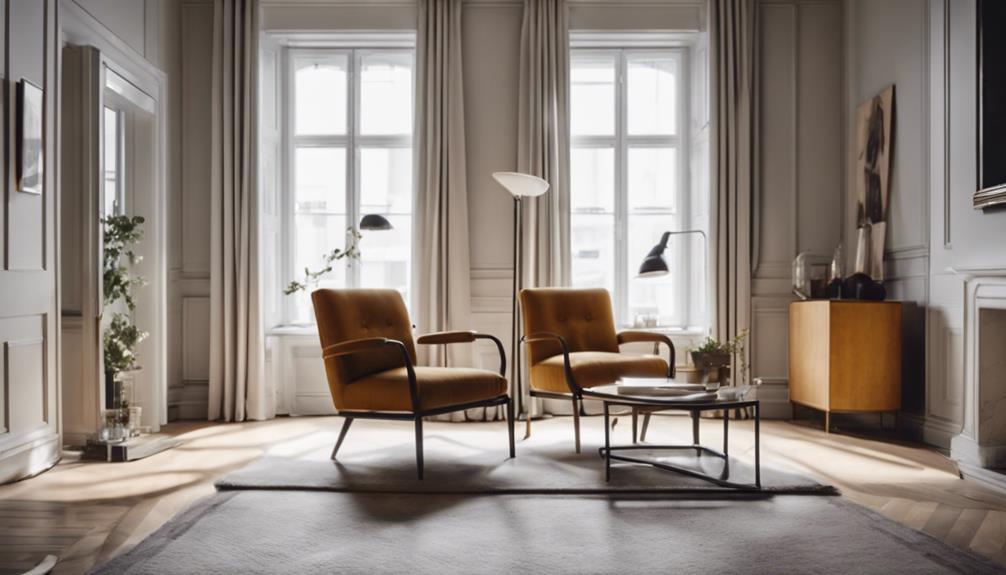
Embracing Biedermeier aesthetics in modern homes seamlessly merges timeless elegance with contemporary design elements. The simplicity and clean lines characteristic of Biedermeier furniture effortlessly blend into the modern home setting, creating a harmonious balance between past and present.
The emphasis on natural wood and graceful curves in Biedermeier pieces adds a touch of timelessness to contemporary interiors, while their playful geometric shapes and light wood finishes contribute to a modern yet classic look.
The visual delicacy and unadorned planes of Biedermeier style furniture further enhance its shockingly modern appeal, making it a versatile choice that complements various interior design styles, from minimalist to eclectic.
Biedermeier furniture's enduring modernity lies in its ability to adapt and enhance diverse modern home environments, providing a sophisticated and elegant aesthetic that stands the test of time.
The Enduring Appeal of Biedermeier
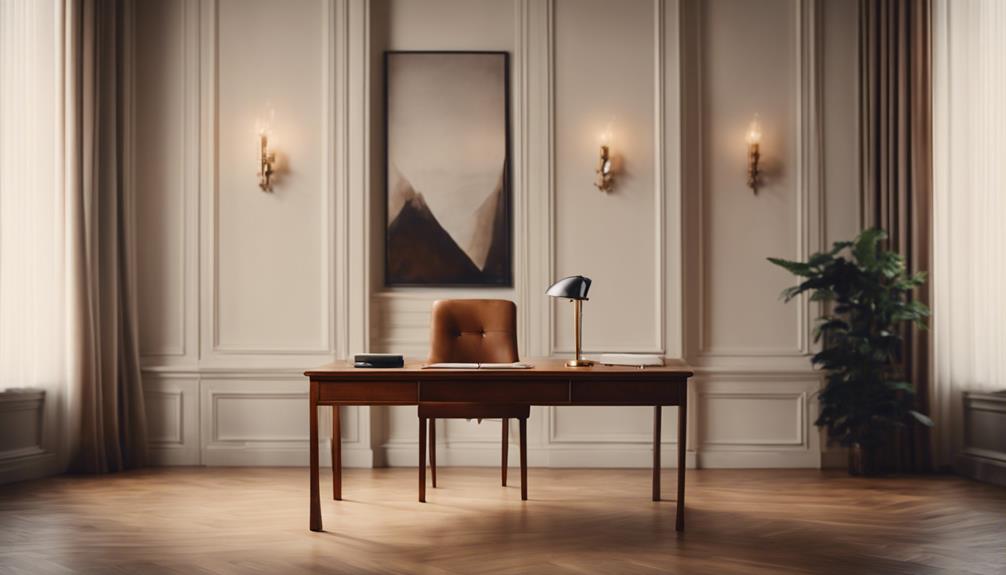
Despite originating as a middle-class style in the 19th century, Biedermeier furniture maintains a lasting allure that continues to captivate collectors and interior designers alike. The enduring appeal of Biedermeier lies in its timeless elegance and clean lines, making it a versatile choice for various design aesthetics.
This enduring popularity is further enhanced by the warm wood tones that add a touch of sophistication to any space. The high prices commanded by Biedermeier pieces highlight their status as coveted investments rather than merely functional items, catering more to discerning collectors and design enthusiasts than the average consumer.
- Biedermeier's ability to blend seamlessly into modern interior design styles
- The sophisticated and classic appeal of Biedermeier furniture transcending its middle-class origins
- The lasting allure of Biedermeier pieces for collectors and interior designers, reflecting their timeless elegance and design excellence
Biedermeier: Past Meets Present
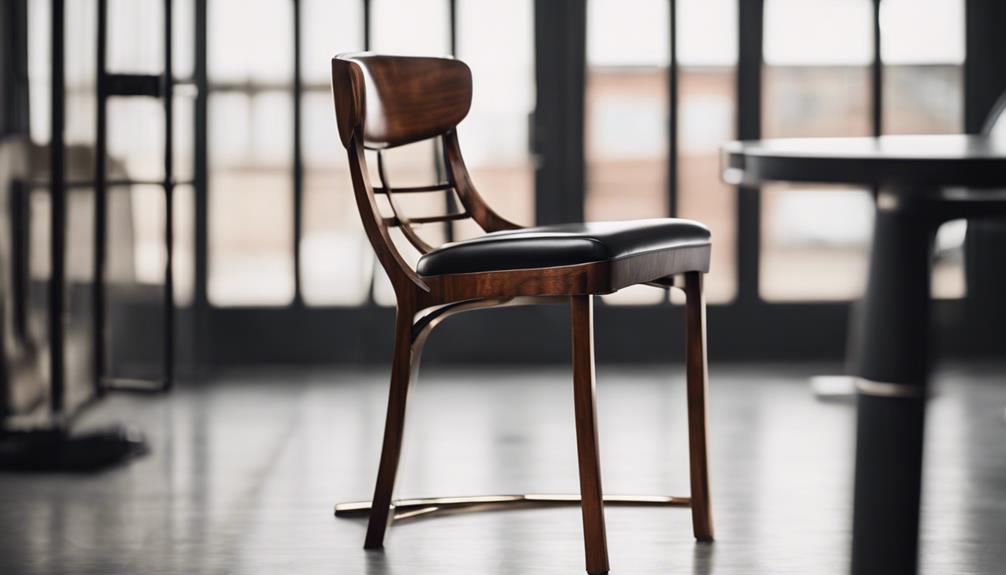
Biedermeier furniture's timeless design influence continues to resonate in contemporary interpretations, bridging the gap between the past and the present seamlessly.
The sleek lines and minimalist aesthetic of Biedermeier pieces have inspired modern designers to create furniture that pays homage to this historical style while infusing it with a fresh, current perspective.
This fusion of classic elegance with a modern twist showcases the enduring relevance of Biedermeier in today's design landscape.
Timeless Design Influence
Its enduring design influence is unmistakably present in modern Scandinavian and minimalist styles, showcasing how Biedermeier seamlessly bridges the past with the present. The lasting impact of Biedermeier style on modern furniture is evident through the following observations:
- Natural Materials: Biedermeier's focus on natural wood continues to shape contemporary interior trends, emphasizing sustainability and eco-conscious design choices.
- Simple Lines: The clean and simple lines characteristic of Biedermeier design have transcended time, influencing modern furniture with their timeless appeal and understated elegance.
- Craftsmanship: Biedermeier's emphasis on craftsmanship has inspired a resurgence in appreciation for quality workmanship in furniture design, resonating with consumers seeking durable, long-lasting pieces in today's disposable culture.
Through these key elements, Biedermeier's design philosophy remains relevant and influential, illustrating how its principles continue to inform and inspire modern interpretations of furniture design.
Contemporary Biedermeier Interpretations
Crafting contemporary Biedermeier interpretations involves blending past elegance with present-day design sensibilities, offering a fresh perspective on this classic style.
Designers are reimagining Biedermeier chairs and furniture by infusing them with modern elements, creating pieces that retain the style's clean lines and warm wood tones while incorporating contemporary twists.
These modern Biedermeier interpretations are tailored to fit seamlessly into today's interior design landscape, appealing to a new generation of design enthusiasts seeking a blend of tradition and innovation.
Modern Interpretations of Biedermeier
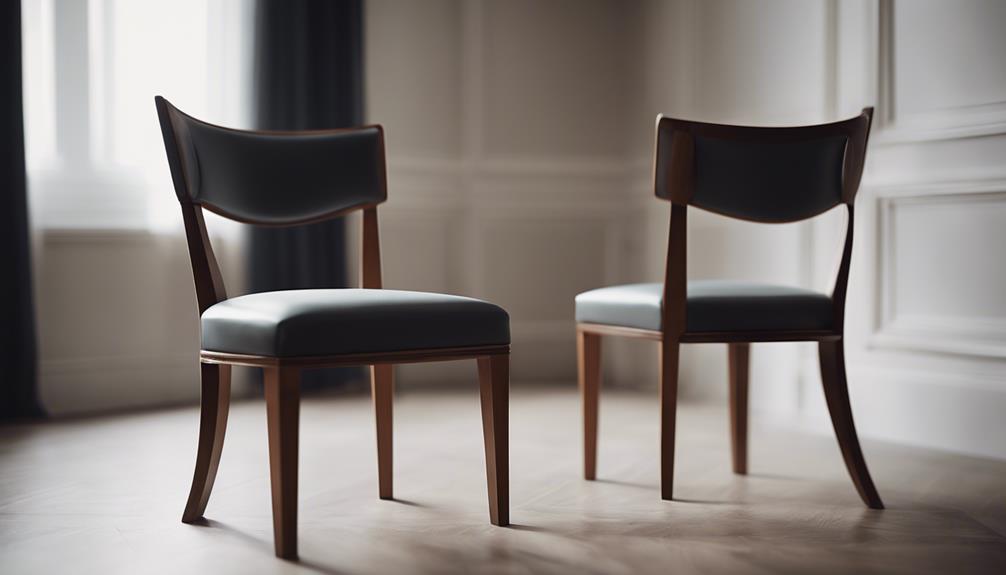
When exploring modern interpretations of Biedermeier style into interior design, designers often blend classic forms with contemporary elements to create a fresh and dynamic aesthetic. Biedermeier furniture's clean lines and playful geometric shapes resonate with modern design sensibilities, making it a popular choice for those seeking a timeless yet modern look.
Some key points to delve into when exploring modern interpretations of Biedermeier include:
- Minimalist Integration: Biedermeier pieces are frequently integrated into minimalist interiors to add a touch of elegance and sophistication.
- Mix of Traditional and Modern: Designers seamlessly combine traditional Biedermeier furniture with modern accents to create a harmonious balance between the old and the new.
- Versatility and Relevance: The enduring appeal of Biedermeier furniture lies in its ability to adapt to contemporary design trends while still maintaining its classic charm.
Biedermeier's Contemporary Relevance
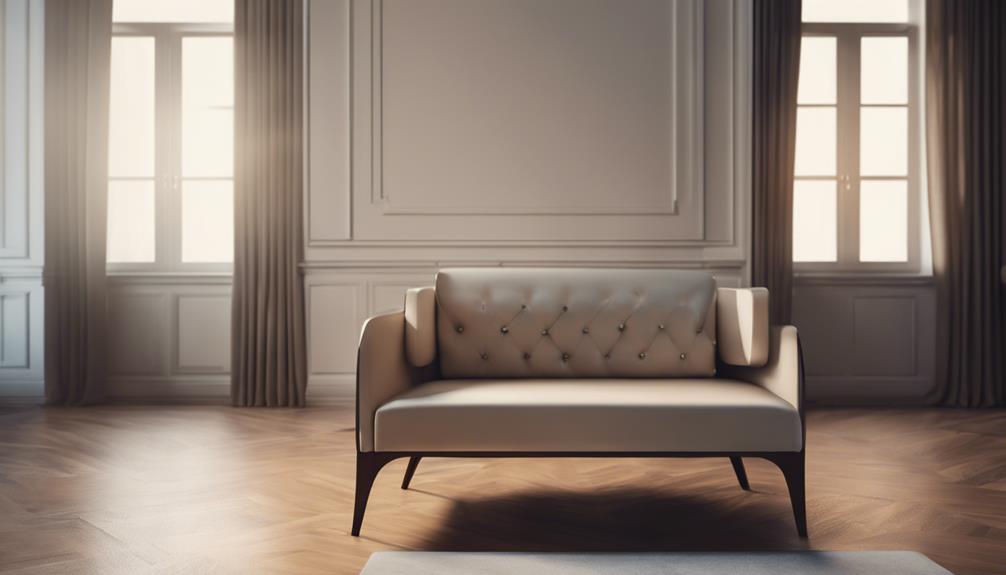
Biedermeier furniture's resurgence in modern interiors showcases its enduring appeal and timeless design qualities. Originating in Germany and Austria during the early 19th century, the Biedermeier style emerged as a reaction to the extravagant Empire style that preceded it.
The simplicity, elegance, and functionality of Biedermeier furniture have contributed to its contemporary relevance, resonating with interior designers and collectors alike. The clean lines and understated elegance of Biedermeier pieces make them versatile additions to a range of modern interiors, blending effortlessly in both minimalist and more ornate settings.
The fresh antique aesthetic of Biedermeier furniture is gaining popularity, appealing to those with a preference for classic yet playful design elements. As a result, Biedermeier furniture continues to hold its place in the modern design world, offering a timeless charm that transcends trends and remains a testimony to quality craftsmanship and enduring style.
Biedermeier's Timeless Charm
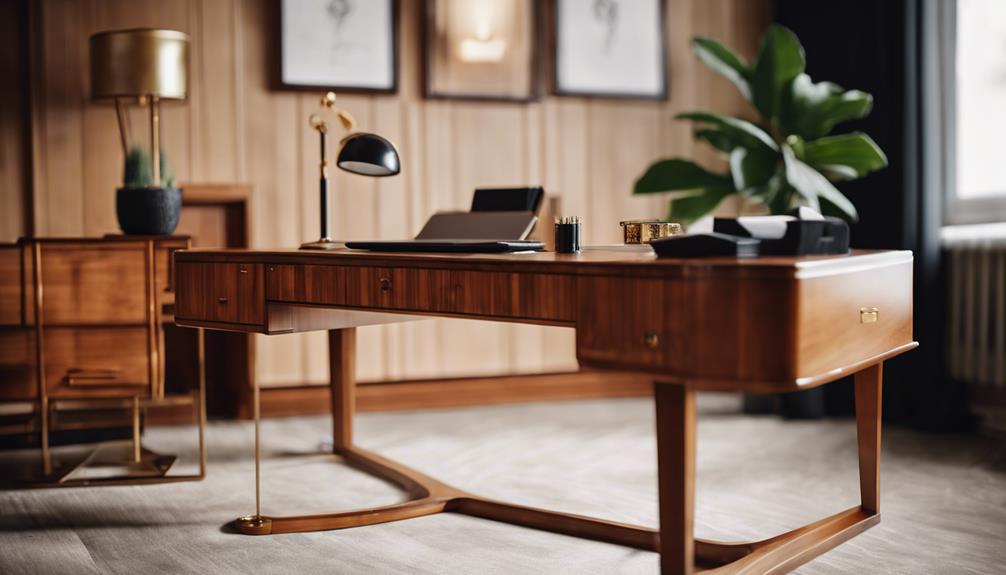
The lasting charm of Biedermeier furniture lies in its ability to blend simplicity with elegance, enchanting modern interior designers and collectors alike. Originating in Germany around 1815 during the Biedermeier Period, this style was a response to the opulent Empire style, focusing on lighter woods like walnut, pear, and cherry.
Biedermeier furniture emphasized natural wood grain and playful geometric shapes, diverging from the heavy ornamentation of its predecessor. Despite being named after a satirical character, the Biedermeier style has endured as a modern classic. Its fresh and modern aesthetic transcends time, with echoes of its design principles visible in later movements like Art Deco.
The enduring appeal of Biedermeier furniture showcases a two-century-old style that remains beloved by many, proving that simplicity and elegance are timeless qualities that continue to captivate admirers.
Biedermeier: A Modern Classic
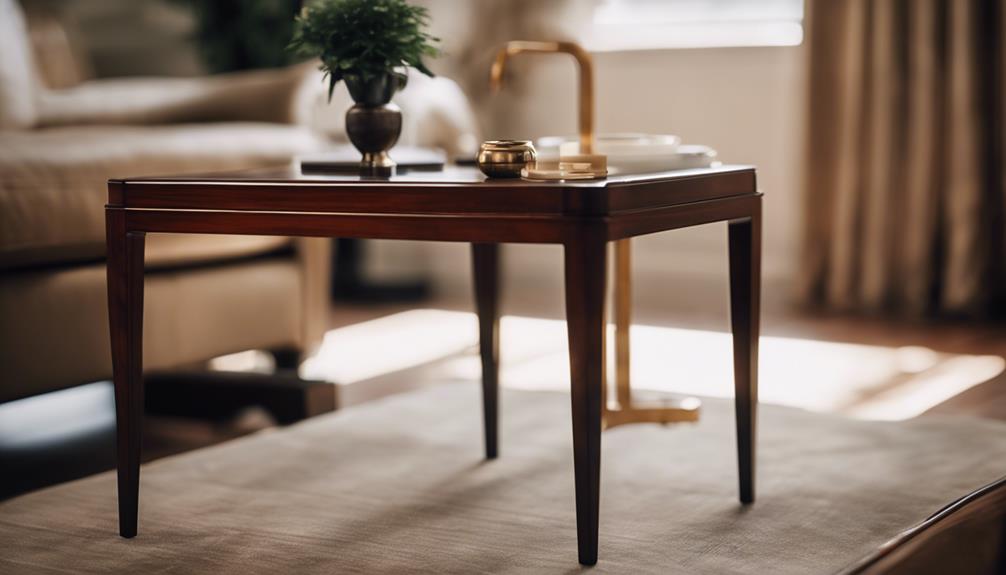
Biedermeier designs, characterized by their simplicity and focus on natural materials, have stood the test of time, influencing modern interiors with their clean lines and understated elegance. Despite originating in the early 19th century, Biedermeier pieces continue to resonate with contemporary tastes, showcasing a timeless appeal that transcends changing design trends.
Their impact on modern aesthetics is undeniable, with echoes of Biedermeier style found in the sleek lines and geometric shapes of today's interior design.
Timeless Biedermeier Designs
With its timeless appeal and modern flair, these designs effortlessly bridge the gap between classical elegance and contemporary aesthetics. Biedermeier furniture showcases a unique blend of classical forms and playful geometric shapes, highlighting natural wood grain over traditional dark woods like ebony and mahogany. Despite originating as a middle-class style, Biedermeier pieces are now highly sought after and considered fresh and modern even after two centuries.
Biedermeier furniture emphasizes simplicity, with pieces like the Biedermeier chest of drawers showcasing clean and simple lines that exude elegance.
The style's enduring appeal lies in its visual delicacy, as it manages to be both visually striking and understated at the same time.
Biedermeier designs seamlessly fit into contemporary interiors, providing a touch of timeless charm that elevates any space.
Influence on Modern Interiors
Having left a lasting impact on modern design movements, Biedermeier furniture's clean lines and simplified shapes continue to influence contemporary interiors. Its influence on modern interiors, particularly in the living room, is evident in the way it seamlessly blends with various design styles, adding a touch of elegance and sophistication. The enduring appeal of Biedermeier furniture in modern homes lies in its ability to create a harmonious and inviting atmosphere while maintaining a sense of timeless beauty.
| Living Room | Furniture Design |
|---|---|
| Clean lines | Elegant simplicity |
| Timeless appeal | Sophisticated charm |
| Seamless integration | Contemporary aesthetics |
In the living room, Biedermeier furniture design stands out for its ability to elevate the space with its refined aesthetics and functional elegance. By incorporating pieces inspired by Biedermeier, modern interiors can achieve a balance between classic sophistication and contemporary style, creating a timeless yet modern look that resonates with today's design preferences.
Frequently Asked Questions
What Are the Characteristics of Biedermeier Furniture Style?
Biedermeier furniture style emerged around 1815 in Germany, emphasizing simplicity and informality for the middle class. It features lighter woods like walnut, pear, and cherry, showcasing natural beauty. While keeping some classical forms, Biedermeier incorporates playful geometric shapes and curves for visual delicacy.
Rejecting dark woods, it favors unadorned planes and lightness, resulting in a surprisingly modern aesthetic. This enduringly popular style exudes a fresh and timeless charm sought after for over two centuries.
Is Biedermeier Furniture Valuable?
Biedermeier furniture holds significant value in the antique market due to its quality craftsmanship, premium materials, and historical importance. The demand for Biedermeier pieces among collectors and interior designers has been steadily increasing, impacting their market worth positively.
Factors such as condition, provenance, and unique design elements influence the value of Biedermeier furniture. Well-preserved and rare pieces can command high prices at auctions and from reputable dealers.
How to Identify Biedermeier Furniture?
To identify Biedermeier furniture, look for:
- Clean lines, gentle curves, and a focus on showcasing the natural wood grain.
- Lighter woods like walnut, cherry, or pear are common, as opposed to darker tones like ebony or mahogany.
- Elements such as playful geometric shapes, visual delicacy, and a lack of ornate decoration characterize this style.
- Pieces often feature curves and classic forms while maintaining a modern aesthetic with unadorned planes.
What Is the Difference Between the Biedermeier and Empire Styles?
Biedermeier and Empire styles differ in their design philosophies. Biedermeier emphasizes simplicity, informality, and lightness with light woods like walnut and clean lines.
In contrast, Empire style focuses on opulence, grandeur, and heavy ornamentation using dark woods like ebony and intricate carvings. Biedermeier seeks elegance through natural wood grain and playful shapes, while Empire style showcases lavish gilding and rich fabrics.
These distinctions reflect the contrasting aesthetics and principles of each furniture style.
Conclusion
To sum up, Biedermeier furniture continues to captivate with its timeless elegance and minimalist design. Like a hidden treasure waiting to be discovered, Biedermeier pieces offer a modern twist on classic aesthetics, blending clean lines and natural beauty seamlessly.
With its enduring appeal and contemporary relevance, Biedermeier remains a modern classic, adding a touch of sophistication to any home décor.
